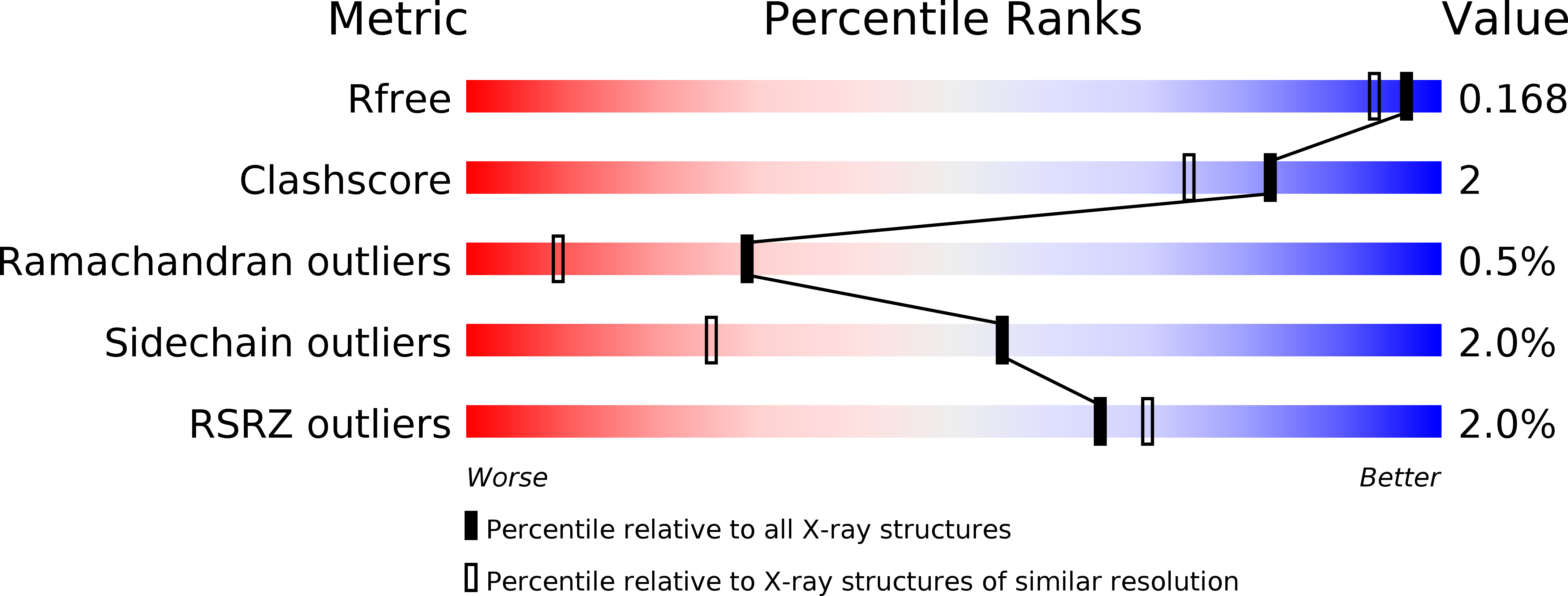Crystal structure of a feruloyl esterase belonging to the tannase family: a disulfide bond near a catalytic triad.
Suzuki, K., Hori, A., Kawamoto, K., Thangudu, R.R., Ishida, T., Igarashi, K., Samejima, M., Yamada, C., Arakawa, T., Wakagi, T., Koseki, T., Fushinobu, S.(2014) Proteins 82: 2857-2867
- PubMed: 25066066
- DOI: https://doi.org/10.1002/prot.24649
- Primary Citation of Related Structures:
3WMT - PubMed Abstract:
Feruloyl esterase (FAE) catalyzes the hydrolysis of the ferulic and diferulic acids present in plant cell wall polysaccharides, and tannase catalyzes the hydrolysis of tannins to release gallic acid. The fungal tannase family in the ESTHER database contains various enzymes, including FAEs and tannases. Despite the importance of FAEs and tannases in bioindustrial applications, three-dimensional structures of the fungal tannase family members have been unknown. Here, we determined the crystal structure of FAE B from Aspergillus oryzae (AoFaeB), which belongs to the fungal tannase family, at 1.5 Å resolution. AoFaeB consists of a catalytic α/β-hydrolase fold domain and a large lid domain, and the latter has a novel fold. To estimate probable binding models of substrates in AoFaeB, an automated docking analysis was performed. In the active site pocket of AoFaeB, residues responsible for the substrate specificity of the FAE activity were identified. The catalytic triad of AoFaeB comprises Ser203, Asp417, and His457, and the serine and histidine residues are directly connected by a disulfide bond of the neighboring cysteine residues, Cys202 and Cys458. This structural feature, the "CS-D-HC motif," is unprecedented in serine hydrolases. A mutational analysis indicated that the novel structural motif plays essential roles in the function of the active site.
Organizational Affiliation:
Department of Biotechnology, The University of Tokyo, Tokyo, Japan.
















